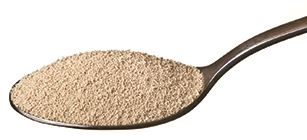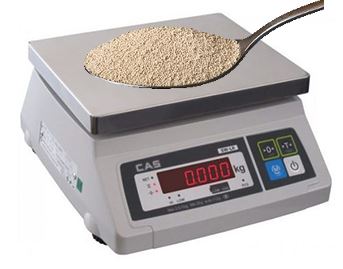Identifying the gram as a unit of measuring mass
In groups of five:
- Use a teaspoon to scoop dry sand or soil.

- Compare the mass of the sand in the tea spoon with:
- kg sand bag.
- A table spoonful of soil.
What do you notice?
- Use a beam balance to compare the mass of the teaspoonful of sand with:
- A piece of chalk
- A pencil
- A biro pen
- Coins of different denominations
What do you notice?
- Discuss your findings with other groups.
- Use a weighing balance to measure the mass of one teaspoonful of sand.

- Divide the sand into five equal amounts.
- Discuss your results and share with other groups.
Note
- The mass of the sand in the teaspoon is about 5 grams.
- The mass of each of the amounts of sand is 1 gram (g).
- The unit of measuring mass of small objects is a gram (g).
Estimating and measuring mass in grams
Group Activity 3
In groups of five:
- Collect different items with mass that can be measured in grams.
- Estimate and measure the mass of each item.
- Record the two results in a table as shown.
Item | Estimated mass in grams | Actual mass in grams |
Potato | ||
Tomato | ||
Rubber | ||
Mango | ||
Maize cobs |
- Discuss the estimated and the actual mass of each item.
Exercise C
Item | Estimated mass in grams | Actual mass in grams |
Orange | ||
Avocado | ||
Exercise book | ||
Textbook |